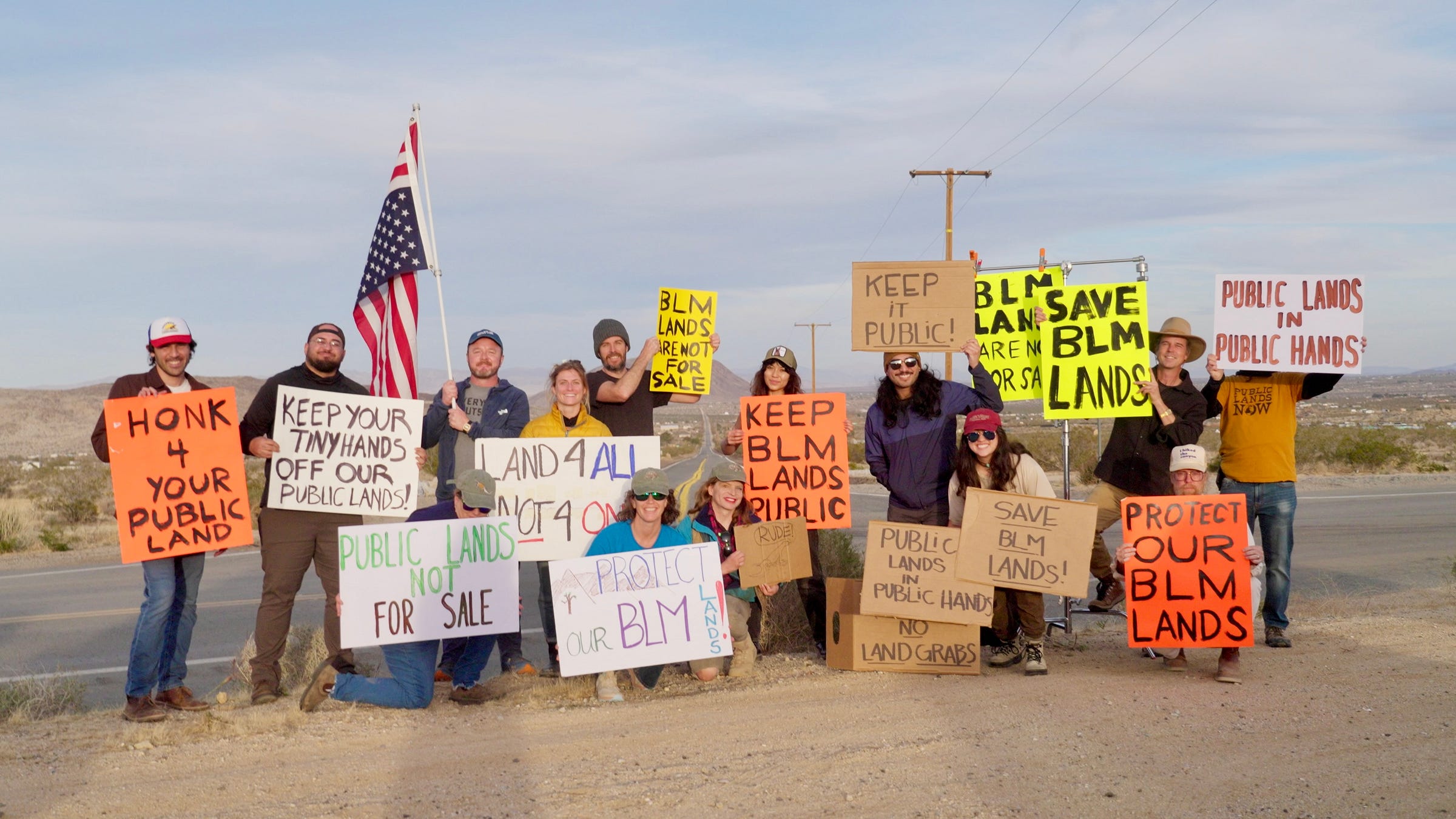Dispatch #13 - Millions of Acres of BLM Land On the Chopping Block
Visuals of Landscapes at Risk + What You Can Do to Protect Conglomerate Mesa
Good morning from Los Angeles - a city derided as a “trash heap,” with “entire neighborhoods” under the sway of “criminals,” a place that needs to be “liberated” from “animals” and “foreign enemies” protesting its streets.
If holding up demonstration signs and walking peacefully with thousands in my neighborhood - five miles from Downtown LA - to object to inhumane (and illegal) immigration raids and the fire sale of our public lands, then consider me a California quail.
During yesterday’s protests…
Public Lands For Sale
I continue to be dumbfounded by politicians who are ignoring the overwhelming majority of Americans and their own constituents who value our shared public lands.
According to the latest Conservation in the West poll, 72% of westerners (which does not include California, Oregon, and Washington) want their elected officials to prioritize clean water, healthy air, and wildlife habitat. An overwhelming 89% of voters across party lines support keeping National Monument protections in place.
Public lands - and the wildlife, biodiversity, watersheds, and recreation they support — remain one of the last places where Americans find common ground. Where else do you see hunters, birders, OHV users, and hikers standing shoulder to shoulder, all holding signs about the importance of keeping public lands in public hands?

One question the poll didn’t even ask, probably because it sounds so absurd, was this:
Would you support selling off millions of acres of BLM and National Forest land to the highest bidder?
And yet, here we are. Senator Mike Lee of Utah, giving a middle finger to the very people who elected him, has introduced a new proposal to sell off between 2 million and 3.2 million acres of public lands. The plan was quietly tucked into draft legislation released Wednesday by the Senate Energy and Natural Resources Committee.
Reporter Jonathan Thompson of The Land Desk wrote an excellent breakdown of what’s at stake. As he explains:
While the amendment is purportedly to free up more land for affordable housing, there is nothing in the text restricting the end use of the land after it’s sold or transferred.
At first glance, this appears relatively harmless: It would merely consolidate private holdings on the urban fringe, and ease the management nightmares of checkerboard land-ownership. But this is where I urge you to think about your favorite public land-adjacent community and consider what might parcels might be prioritized for disposal.
Even more alarming, journalist Wes Siler — who spoke with Tracy Stone-Manning of the Wilderness Society — reports that the proposed sell-off could affect up to 120 million acres.
Using The Wilderness Society’s map of potentially affected BLM and Forest Service lands, I followed Jonathan’s advice and thought about some of the places I love most. The photos below represent just a small fraction of the landscapes that could be lost if this proposal goes through.
Protect Conglomerate Mesa
We have just one day left to submit a public comment to the BLM about the potentially devastating impact of gold mining on Conglomerate Mesa — a landscape I wrote about in Dispatch No. 2, nestled in the Eastern Sierra of California.
This nearly roadless, 22,500-acre expanse is a refuge for raptors, migrating mule deer, and rare plant species found nowhere else. For the Nuumu, Newe, and Timbisha peoples of Payahuunadü, the Mesa is not only ancestral ground, but a living landscape for hunting, gathering pinyon nuts, and connecting with generations of tradition. It also serves as a critical stronghold for the imperiled Joshua tree.
Now, that landscape is under threat. A Canadian mining company, K2 Gold, wants to cut new roads and drill across 120 sites over 14,000 acres of the Mesa’s fragile terrain. If they find enough gold, the company has already told investors that it would be ripe for a massive open-pit, cyanide heap leach mine.
The pattern of gold mining in California is always the same:
👉 Find the mineral
👉 Remove the people
👉 Wound the land
👉 Walk away
Whether it’s panning, blasting, or heap leaching, the result is always the same: a short-lived boom for a few followed by a long-term bust for everyone else. This is a search‑and‑destroy economy. And the scars it leaves behind — from tailings ponds and poisoned water to blown‑out hillsides and “keep out” signs — are permanent.
But as public land owners, we still have a say. Please consider adding your voice. Submit a comment to the BLM and join the thousands who are speaking up for Conglomerate Mesa. This link makes leaving a comment easy.
And if you want to see what’s at stake, my friend Chris Kam made a beautiful short documentary about the Mesa and the threats it faces. I even make a few cameos.
As always, I’m so grateful to have you here. I’ll be back in your inbox next Sunday to share my summer book tour announcement and highlight one of my favorite BLM managed rivers in northern California.
Josh












Thanks for keeping this on our minds. My wife and I have submitted comments but did not have the time to travel to Lone Pine for the public comment. We only need to loom a few valleys over, at Round Mountain, to know what's at stake for Conglomerate Mesa.
Thanks for inspiring me to write a comment on the EIR for Conglomerate Mesa!